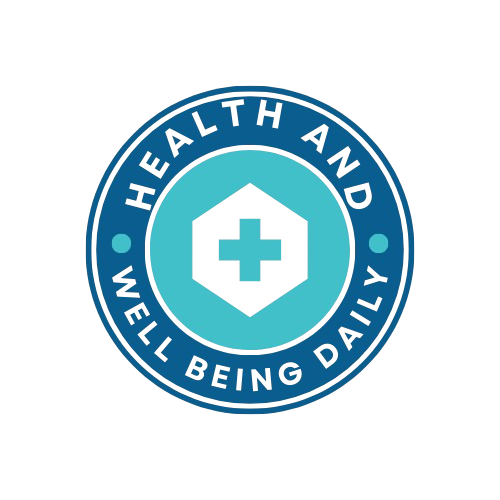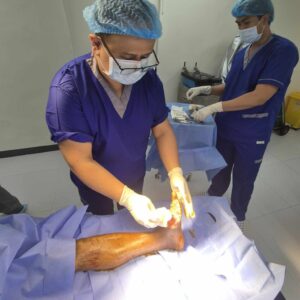Headaches are among the most common health complaints worldwide, affecting around 80-90% of people in the United States at some point in their lives. They can vary in severity, frequency, and location, but no matter the type, headaches can significantly impact your daily activities. Whether it’s a dull, persistent ache or a sharp, throbbing pain, understanding the causes and treatment options is crucial for effective relief.
Types of Headaches and Their Causes
Primary Headaches
Primary headaches are the most common type of headache, and they are not caused by an underlying medical condition. Instead, the headache itself is the main issue. These include:
- Migraine Headaches: Often described as a pulsing or throbbing pain, migraines typically affect one side of the head. They can be accompanied by nausea, vomiting, and sensitivity to light and sound. Migraines may be triggered by stress, hormonal changes, certain foods, or environmental factors.
- Tension Headaches: The most common form of headache, tension-type headaches are characterized by a constant, dull ache around the forehead or temples. These headaches are often caused by stress, anxiety, or muscle tension in the neck and shoulders.
- Cluster Headaches: Although rare, cluster headaches are one of the most severe types of headaches. They cause intense, burning pain around one eye and are often accompanied by symptoms like eye redness and nasal congestion. These headaches occur in cycles, with several attacks happening in a short period.
Secondary Headaches
Secondary headaches are caused by underlying medical conditions. These types of headaches are less common but can be more serious. Examples include:
- Cervicogenic Headaches: These headaches are caused by a neck injury or poor posture, often resulting in pain at the back of the head or the base of the skull.
- Sinus Headaches: Resulting from sinus infections or inflammation, sinus headaches are felt in the forehead, cheeks, or around the eyes, and are often accompanied by sinus congestion.
- Headaches Due to Eye Strain: Prolonged use of digital devices or reading in poor lighting conditions can lead to eye strain, causing headaches.
Common Headache Triggers and Risk Factors
Headaches can be triggered by a variety of factors. Some of the most common headache triggers include:
- Dehydration: Not drinking enough water can cause tension headaches or migraines.
- Hormonal Changes: Particularly in women, hormonal fluctuations during menstruation, pregnancy, or menopause can contribute to headache onset.
- Food Triggers: Certain foods like chocolate, cheese, alcohol, and processed meats can trigger migraines in some people.
- Stress: Emotional and physical stress are significant contributors to tension headaches and migraines.
- Sleep Issues: Poor sleep quality or irregular sleep patterns can increase headache frequency.
Understanding your personal triggers is essential for reducing the frequency and severity of headaches.
Effective Home Remedies for Headache Relief
Before reaching for medications, several home remedies can provide relief from headaches:
- Hydration: Drinking plenty of water can help prevent dehydration headaches, especially for those prone to migraines.
- Cold or Warm Compresses: Applying a cold compress to the forehead can numb pain from migraines, while a warm compress on the neck can help relieve tension headache symptoms.
- Essential Oils: Lavender and peppermint oils have been shown to help reduce headache symptoms. Inhaling the scent or applying diluted oils to the temples can bring relief.
- Rest: Sometimes, simply resting in a dark, quiet room is the best way to alleviate headache pain, especially for migraines.
- Caffeine: In moderation, caffeine can help reduce headache pain, especially in the early stages of a migraine.
Medical Treatments for Headache Pain
For more severe or persistent headaches, medical treatments may be necessary. These include:
- Over-the-Counter (OTC) Medications: Common OTC options like ibuprofen (Advil), acetaminophen (Tylenol), and aspirin can help relieve mild to moderate headache pain.
- Prescription Medications: For more severe headaches, particularly migraines, prescription medications may be required. These include triptans, which are specific medications that target serotonin receptors to alleviate migraine pain, and preventive medications like beta-blockers or anticonvulsants.
- Botox Injections: For chronic migraines, Botox injections have been FDA-approved as a treatment option, helping to prevent headaches by reducing the frequency of attacks.
- Physical Therapy: If headaches are linked to muscle tension, especially in the neck and shoulders, physical therapy may help by improving posture and relieving tight muscles.
When to See a Doctor for Persistent Headaches
While occasional headaches are common, frequent or severe headaches should be evaluated by a healthcare professional. You should seek medical attention if:
- Your headaches become progressively worse or more frequent.
- You experience sudden, severe pain, often referred to as a “thunderclap” headache.
- Your headaches are accompanied by neurological symptoms such as numbness, speech difficulties, or vision changes.
- Over-the-counter medications no longer provide relief.
A doctor can help determine the underlying cause and recommend appropriate treatments.
Preventing Headaches: Tips for Long-Term Relief
Preventing headaches involves lifestyle adjustments and regular habits that promote overall well-being. Here are some tips:
- Sleep: Maintain a regular sleep schedule and get 7-9 hours of sleep each night.
- Exercise: Regular physical activity, like walking or swimming, can help reduce stress and prevent headaches.
- Stay Hydrated: Drink plenty of water throughout the day to avoid dehydration.
- Manage Stress: Practice relaxation techniques such as meditation, yoga, or deep breathing exercises to reduce tension.
- Maintain a Healthy Diet: Avoid food triggers and eat balanced meals to support overall health and minimize headache risk.
Takeaway
Headache treatment should be tailored to the specific type and cause of your pain. By understanding whether you’re dealing with a primary or secondary headache, you can explore the best treatment options, from home remedies to medical interventions.
If you suffer from frequent or severe headaches, it’s important to consult a healthcare professional to rule out underlying conditions and create an effective management plan. With the right approach, most headaches can be effectively treated and prevented.






